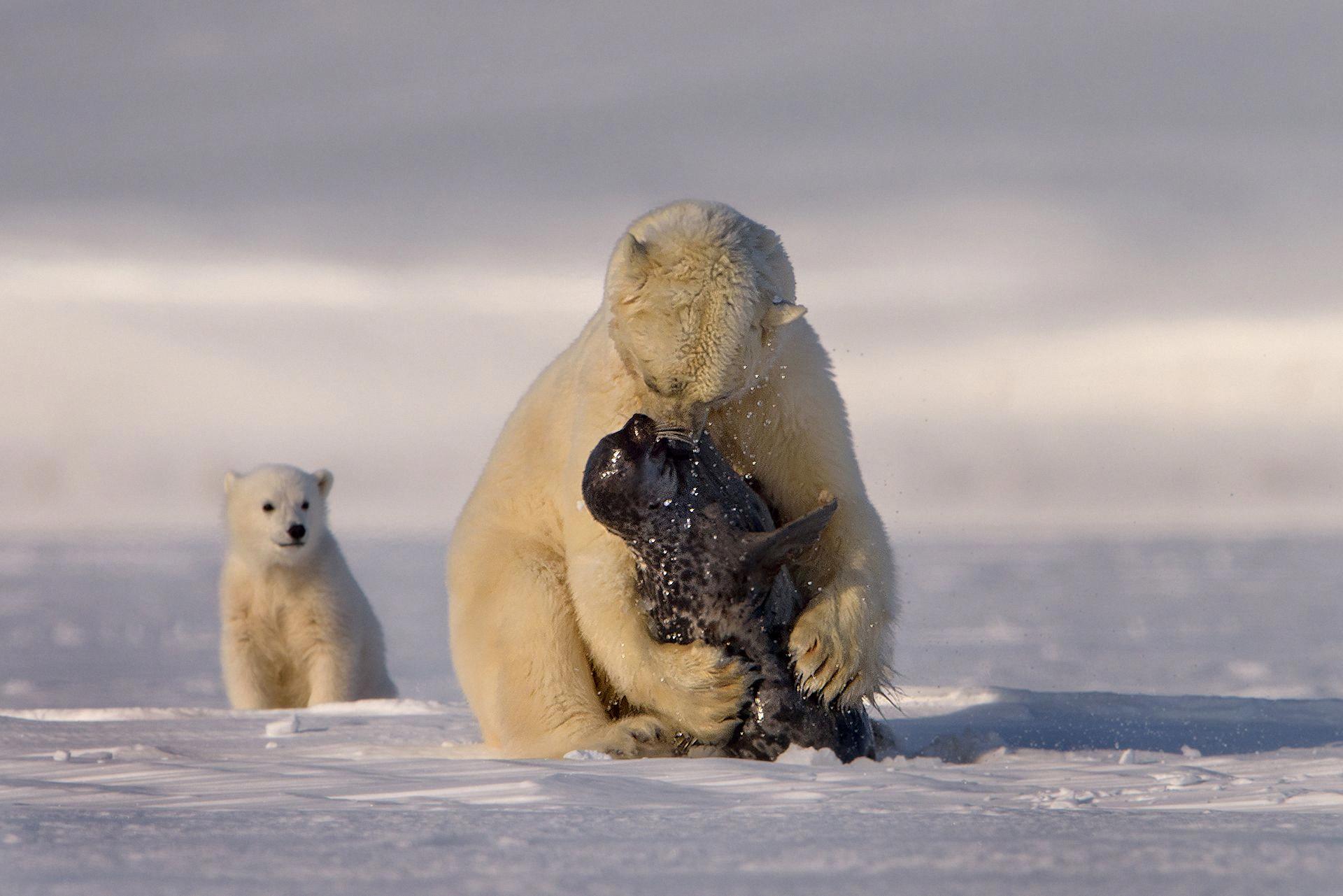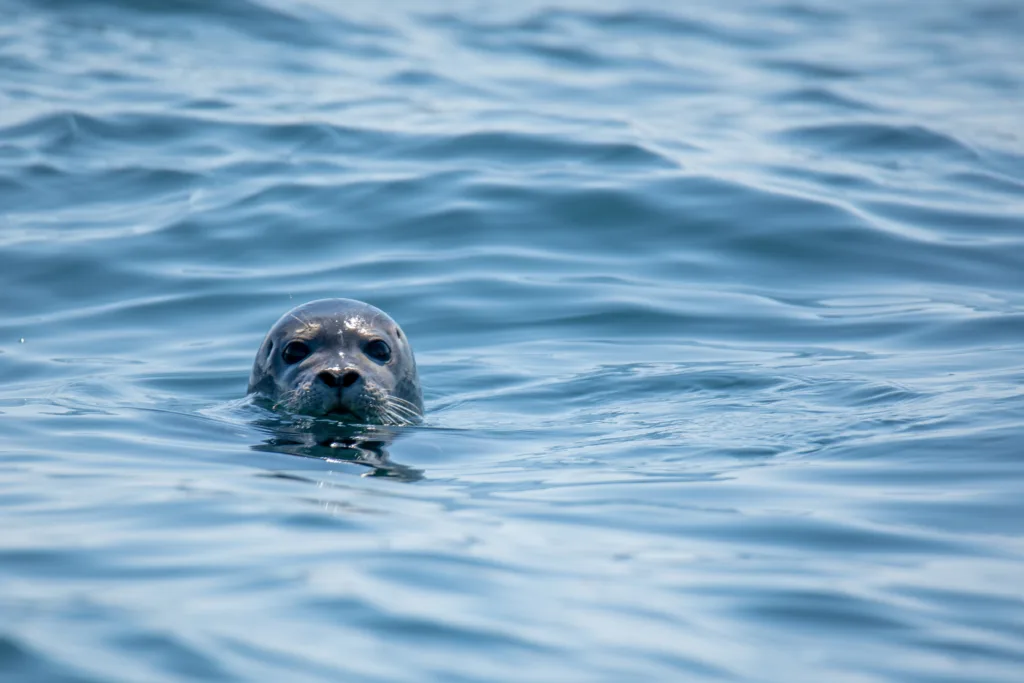Seals are fascinating marine mammals that are known for their streamlined bodies, flippers, and ability to swim effortlessly in the ocean. They belong to the family Pinnipedia, which includes sea lions, fur seals, and walruses. While seals have evolved to become perfectly adapted to marine life, they actually have a surprising evolutionary link to bears.
The family Ursidae, which includes bears, is one of nine families in the suborder Caniformia, or “doglike” carnivorans, within the order Carnivora. Bears’ closest living relatives are the pinnipeds, canids, and musteloids. While this might seem surprising at first, there are actually several physical and behavioral similarities between bears and seals.
Firstly, both bears and seals are carnivorous, with a diet that consists mainly of fish and other marine animals. Seals are known for their exceptional hunting abilities, uing their sharp teeth and powerful jaws to catch prey underwater. Similarly, bears are also skilled hunters, using their strength and agility to catch prey on land.
In addition to their similar diets, both bears and seals have thick fur that helps them stay warm in cold environments. While seals have evolved to live in the ocean, they still need to maintain their body temperature in the chilly waters. Similarly, bears live in colder regions and have thick fur to help them stay warm in the winter.
Another interesting similarity between bears and seals is their parenting behavior. Both bears and seals are known for their strong maternal instincts and spend a significant amount of time caring for their young. Female seals will often nurse their pups for several weeks before weaning them, while bears will care for their cubs for up to two years.
So, how did seals evolve from land animals such as bears? The answer lies in the fossil record. Scientists believe that seals evolved from a group of land animals known as puijila, which lived around 23 million years ago. These animals were semi-aquatic, with webbed feet and a streamlined body shape that allowed them to swim in shallow water. Over time, these animals evolved into the seals that we know today.
While bears and seals may seem like very different animals, they actually share several physical and behavioral similarities. Both are skilled hunters, have thick fur for warmth, and exhibit strong maternal instincts. The evolutionary link between bears and seals highlights the fascinating ways in which animals have adapted to their environments over time.
Are Seals Evolved From Bears?
Seals are believed to have evolved from land animals, and one of the proposed evolutionary paths is from bears. Several studies suggest that the closest living relative of the seal is the bear, particularly the Arctic or polar bear. Fossil evidence also supports this theory, as some extinct bear species have been found with transitional features that suggest they may have been the ancestors of modern seals. However, it is important to note that there are othr proposed evolutionary paths for seals, including from otters. the exact ancestry of seals is still a topic of ongoing research and debate among scientists.

What Is The Closest Living Relative To A Bear?
The closest living relatives to bears belong to the suborder Caniformia, commonly known as “doglike” carnivorans, within the order Carnivora. More specifically, bears share a common ancestor with pinnipeds (seals, sea lions, and walruses), canids (dogs, wolves, and foxes), and musteloids (weasels, otters, and badgers). However, bears are not closely related to the feliform suborder, which includes cats, hyenas, and mongooses. the closest living relatives to bears are pinnipeds, canids, and musteloids.
Are Bears Dogs And Seals Related?
Bears, dogs, and seals are related. They all belong to the order Caniformia, which is a group of carnivorous mammals that share similar physical characteristics. However, they are not closely related to each other.
Bears are more closely related to seals and sea lions than they are to dogs. They belong to the family Ursidae, which includes eight species of bears found throghout the world. Bears are large, carnivorous mammals with a heavy build, thick fur, and sharp claws. They are adapted to a wide range of habitats, from the Arctic to the tropics, and feed on a variety of foods, including fish, meat, and plants.
Seals and sea lions, on the other hand, belong to the family Otariidae and Phocidae, respectively, which are both part of the suborder Pinnipedia. These marine mammals have streamlined bodies, flippers, and thick blubber to help them swim and stay warm in cold water. They are also carnivorous and feed on a variety of prey, including fish, squid, and krill.
Dogs, on the other hand, belong to the family Canidae, which includes domestic dogs, wolves, foxes, and other wild canids. They are characterized by their sharp teeth, keen sense of smell, and social behavior. Dogs are omnivores and eat a variety of foods, including meat, grains, and vegetables.
Bears, dogs, and seals are all related in that they belong to the order Caniformia, but they are not closely related to each other. Bears are more closely related to seals and sea lions, while dogs are more closely related to wolves and foxes.
What Animal Is Most Closely Related To Seals?
The animal that is most closely related to seals is the bear, specifically the Ursidae family. Other close relatives of pinnipeds include weasels, raccoons, and skunks, which belong to the Mustelidae family. These animals share a common ancestor and are classified as members of the order Carnivora. Despite their shared ancestry, pinnipeds have evolved unique adaptations for living in aquatic environments, such as streamlined bodies, webbed feet, and blubber insulation. While there are different species of pinnipeds, including eared and earless seals, and the walrus, they all share a common evolutionary history with their terrestrial relatives in the Carnivora order.

Conclusion
The evolutionary path of seals is closely linked to land animals like otters and bears. The family Ursidae, which includes bears, is one of the closest living relatives of pinnipeds. Both seals and bears are carnivorous and share physical characteristics with other members of the Caniformia suborder, which includes dogs and weasels. Furthermore, the fact that seals evolved from land animals highlights the adaptability and versatility of these marine mammals. the relationship between seals and bears sheds light on the complex and interconnected nature of animal evolution.
